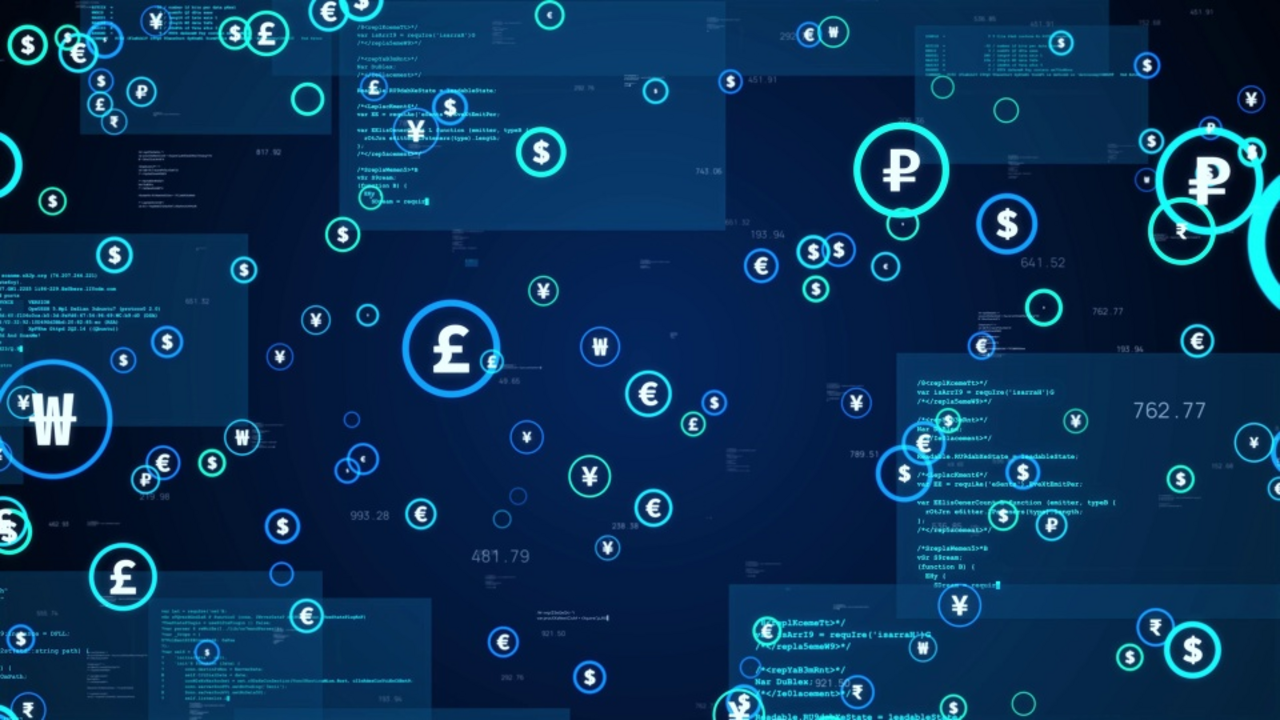The widespread introduction of central bank digital currency is becoming ever more realistic. At present, over 60% of global central banks are experimenting with technology for digital currencies.1 With the European Central Bank announcing the launch of a digital euro project in mid-July,2 the central bank digital currency vision is rapidly transitioning to reality. Now, it’s no longer a question of whether central bank digital currency is at all possible, but rather just how central banks go about defining the design of a CBDC.

How to bring the benefits of programmability to CBDC
From the efficient implementation of helicopter drops to machine-to-machine payments, we look at how programmable payments within central bank digital currencies can revolutionize the transfer of money and help make our world more efficient.
The dawn of digital money: opportunities and challenges
The introduction of central bank digital currencies would be a game-changer for our economy. It comes with huge opportunities – but also with challenges that must not be overlooked. The motivations behind central banks issuing a digital currency are broad, and include fostering digital financial inclusion, improving payment efficiency, nurturing the growth of the digital economy and new business, and modernizing payment infrastructure.
The challenges cover a similarly large scope, and range from evolving cyber security issues to questions surrounding its impact on the global financial market, cross-border transaction potential, data privacy, and legislation. One key feature plays into all of these challenges and opportunities: its programmability.
The potential of programmability

There is growing interest in the potential of programmability, as it would offer myriad uses. Motivations among stakeholders are varied, but its introduction would offer benefits on a large scale.
Central banks are, understandably, keen to ensure the stability of the financial system by incorporating policy frameworks. For governments, programmability would mean that in times of economic crisis, helicopter drops could be distributed to citizens in an efficient and secure manner to drive fiscal stimulus.
In banking, the technology would allow financial service providers to focus on improving efficiency and ensure that they can continue to offer innovative, progressive services to clients. Companies could reduce business process complexity and could also enable IoT payments. For the general public, too, programmable features have the potential to make payments more convenient and efficient, and offer a simple payment experience.
Programmable money versus programmable payments
When talking about the programmability of central bank digital currency, one delineation needs to be made clear – the difference between programmable money and programmable payments. The two terms are often used interchangeably, but they actually refer to two very different things.
Programmable money is money with in-built rules and that comes with constraints for the user. With these rules, money could also be programmed to have an expiration date or be restricted for certain goods, for example. A CBDC with these restrictions would affect currency performance – and come with palpable legal implications. This would certainly influence the acceptance of CBDC.
The term programmable payments refers to an innovative way to transfer money, which offers functional benefits, enable new processes, and support new business models. Many associate programmability with blockchain technology, but this technology is not a requirement.
“A CBDC with programmable features has the potential to revolutionize business, expedite the economy of things, and move our world into an ever more digital future.“
Programmable payments in our day-to-day lives
With programmable payments, features can hold complex provisos that bring about a host of benefits.
One such example is the “economy of things.” The internet of things (IoT) continues to grow rapidly. Back in 2019, one report stated that IoT technology increases business productivity by the equivalent of 0.2% of GDP.3 In the machine economy, the digital market holds enormous potential for programmable payments.
Taking a specific use case, in manufacturing and industry, machine-to-machine programmable payments would allow machines to order their own parts and materials when stocks run low. For smart metering, electric vehicles could pay for charging using a pre-programmed smart contract, meaning the entire transaction can be made without human intervention. The introduction of programmable payments in the world of IoT is a harbinger for entire new business models.
For B2B, the introduction of programmable payments offers the potential to automate payments and send money at the same time as receiving services, thus improving productivity in business. Programmable payments have the potential to make transactions far more efficient and convenient.
Trust in the value of money
As we prepare to usher in a new paradigm shift in global payments, diligence is critical. The introduction of programmable CBDCs offers great opportunities, but the risks are considerable.
CBDC is intended to be the digital equivalent of cash. There should be no privacy issues and no restrictions on use.
Central banks must must ensure that people can trust the value of money. And it is up to them to provide secure infrastructure for financial service providers to program features, functions, and mechanisms outside of the currency that enable new processes and foster innovation. G+D Filia® provides a pioneering programmability solution that forms the basis for innovation, without affecting the properties of the currency. And this is the key takeaway when talking about CBDC and programmability: developing programmable features has the potential to reform transactions without touching the currency itself.
Published: 12/08/2021
Share this article
Subscribe to our newsletter
Don’t miss out on the latest articles in G+D SPOTLIGHT: by subscribing to our newsletter, you’ll be kept up to date on latest trends, ideas, and technical innovations – straight to your inbox every month.


